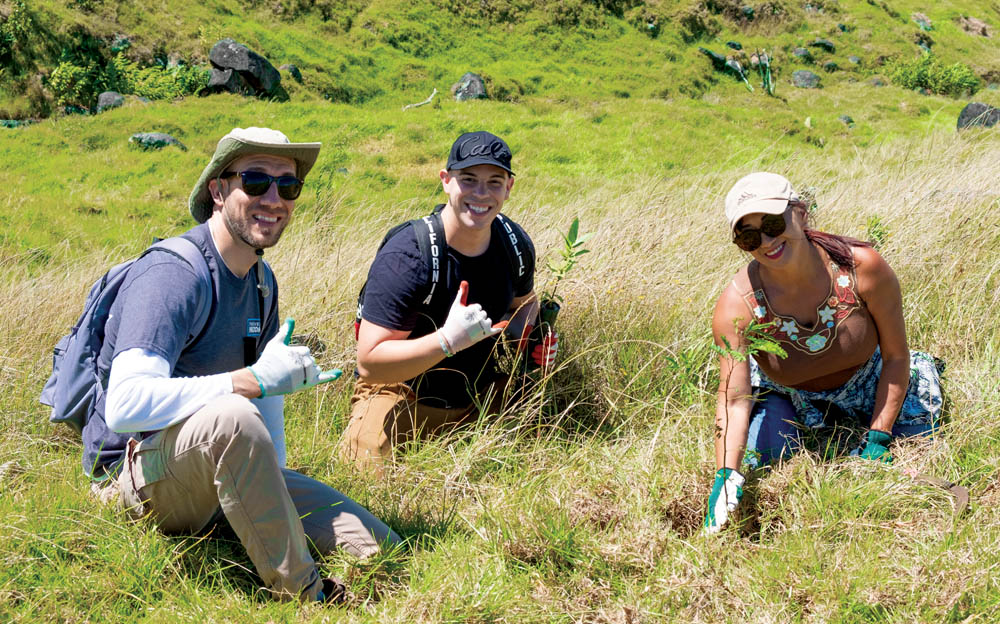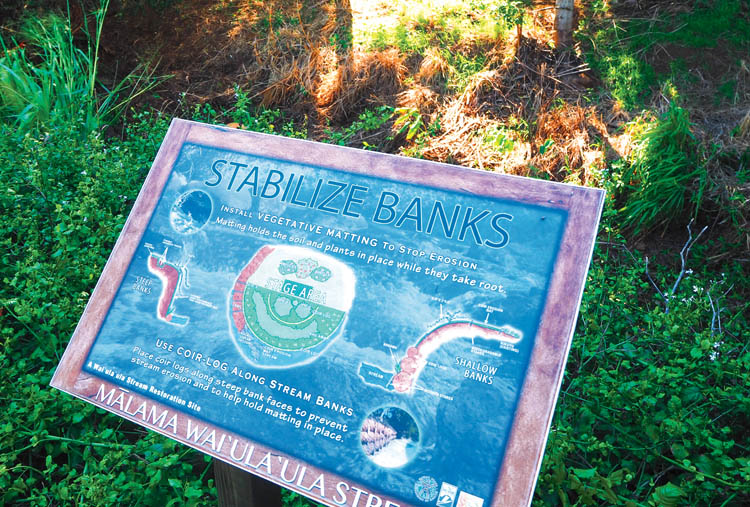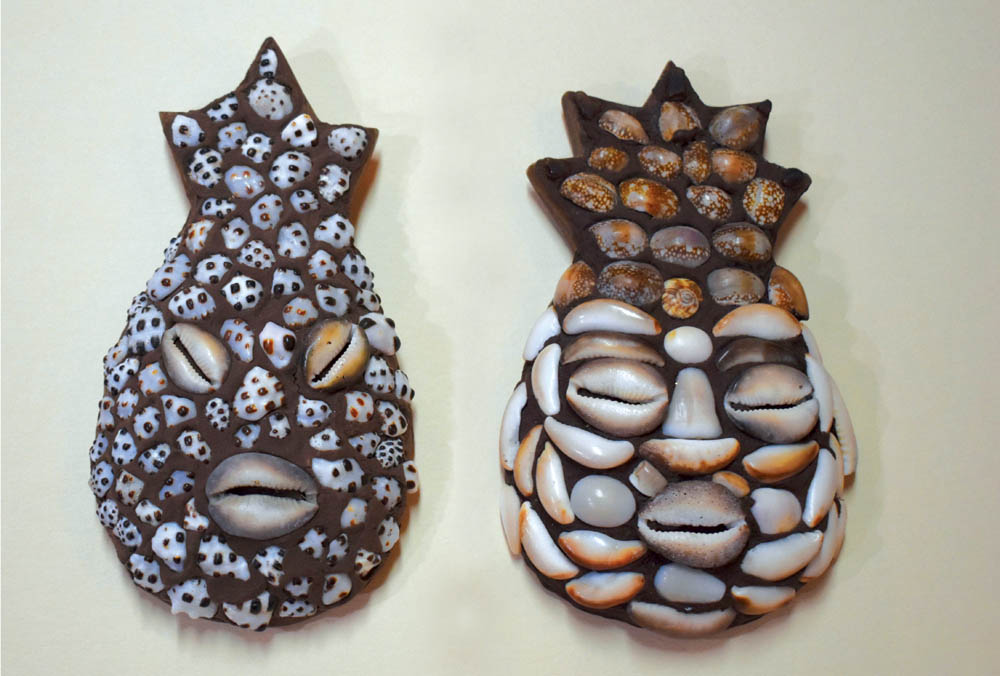
Kathleen Abood Creates Purpose, Connects to Imagination Through Art
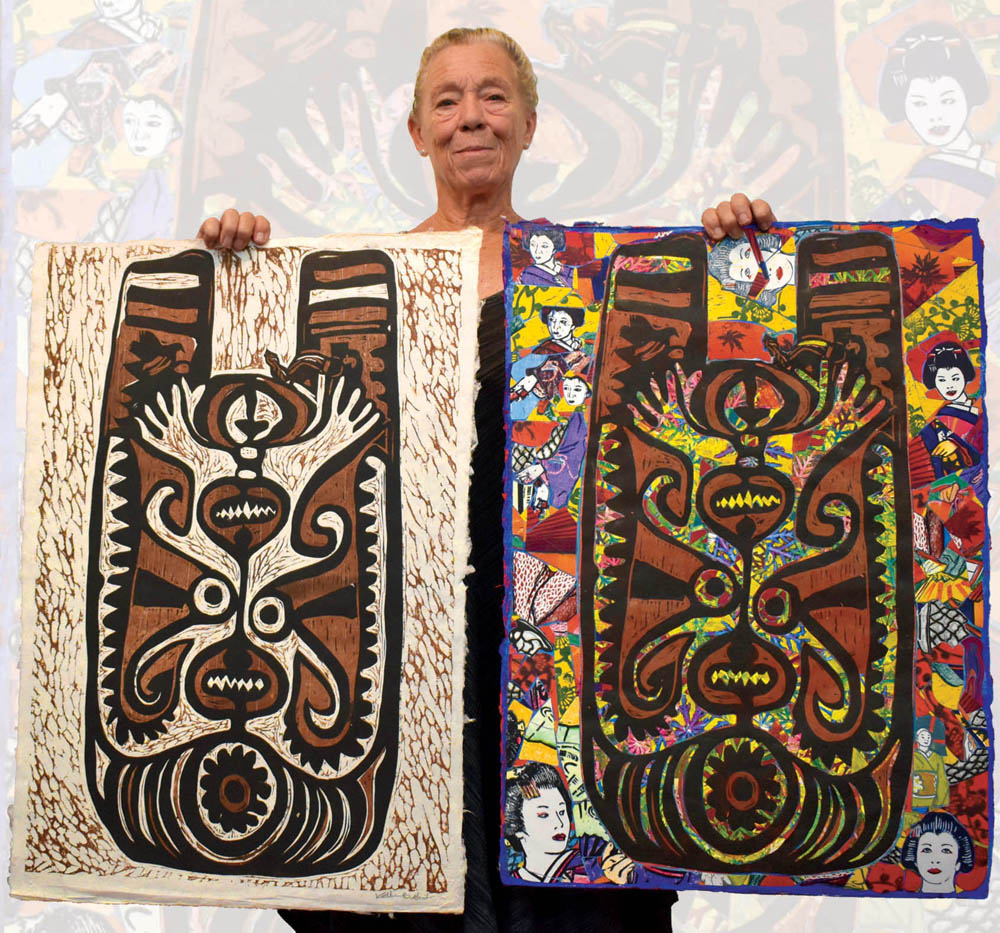
By Fern Gavelek
One woman’s trash is another woman’s treasure. This saying rings true for Kathleen Abood, who collects treasures to create art with intention.
“I’ve always made stuff out of what I have on hand,” muses the Kailua-Kona resident. “Being resourceful comes from my observing nature closely, perhaps.”
Kathleen says she appreciates the “preciousness of nature,” and from the very beginning of her artistic life, nature has been her muse. “The patterns of leaves, colors of stones, the textures of wood, they all appeal to me visually and so I collect materials to work with in the studio,” she details. “My first sculpture was made out of the knotty burl of a tree. I’m just fascinated by natural forms.”
The award-winning artist says she has always collected things to observe and draw as she sees art as a “visual journal,” recording the intimate experiences of each day, whether it’s picking a flower to paint or collecting discarded sheaths of colorful paper to fashion into art.
Always Involved in Art
Born along the city limits of 1950s Detroit, Kathleen was surrounded by farms, park lands, and horse pastures. She spent nearly all of her childhood outside, playing in nature, drawing, and making things at home. She took art classes on the weekends and by high school was winning awards, serving as the photo/layout editor of her yearbook, and involved in the local theatre arts program.
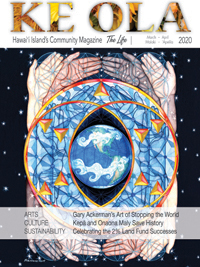
Kathleen’s young artistic capabilities were recognized by Wayne State University, which awarded the teen a full art scholarship with a hectic, full-time schedule.
“Campus life provided all the opportunity I needed to immerse myself in the wonders of the creative world,” she recalls.
From Michigan, Kathleen moved to a hippie commune on an 800-acre cattle ranch in the Santa Cruz Mountains of California. There she “lived on the land,” built a tiny house, became politically active, met her husband George, and they started their family. The couple lived in other communes, building additional homes.
“I’ve tried to have a studio space wherever I’ve lived, so art making has been a continuum,” she notes.
While working in commercial graphics, Kathleen finished her art degree at the University of California-Santa Cruz in 1988. She also taught workshops in local jails, discovering how art could help at-risk youth, so she designed pilot art residency programs with the William James Association and received funding for the community’s under-served children. Kathleen was lauded for these efforts, earning the National Arts for Change Award from the Bravo TV network in 1997 and the Gail Rich Award for Visual Arts in 2000.
“I worked hard teaching and educating youth about their creative potential and dreams,” she shares. “I crafted a life made out of my very best intentions.”
As a teacher, Kathleen relied on her belief to make the most of her resources. She used discarded materials to augment what she could buy with the limited grant funding. Workshops were titled “Making Something Out of Nothing.”
“We created giant animated parade art puppets for New Year’s Eve and Earth Day out of used, recycled cardboard, bamboo, and found objects,” she explains. “We made creatures come alive out of remnants and donated paint.”
Through teaching, Kathleen says she learned how she could share the “gift of being creative” with others and that art could be more than the process of creating art—it could also serve another purpose.
The Power of Art
The Aboods moved to Hawai‘i Island permanently in 2001 and Kathleen created art for numerous solo and group exhibits in both California and Hawai‘i.
One of these works, Thicker than Water: A Mother’s Prayer, is a dimensional, kinetic, interactive, monotype print installation that began in Honolulu and evolved from 2006–09. Kathleen used old wood panels, recycled plexiglass, and acetate sheets for stencils to create the print matrix for the figurative images. When installed, the multiple transparent fabric panels drift gently against the viewer who observes the changing color layers of the human forms.
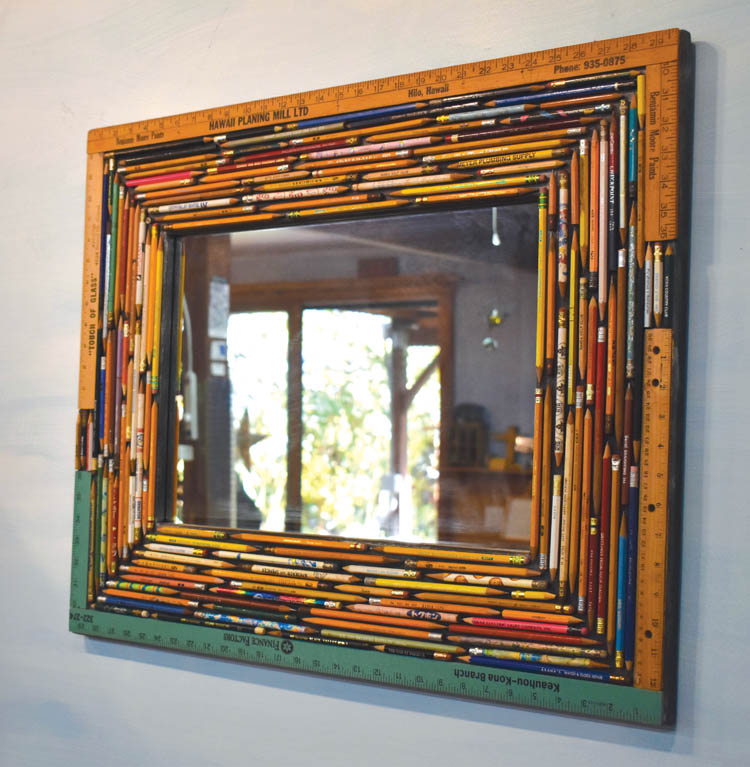
photo by Fern Gavelek
Kathleen created Thicker Than Water to manage the helplessness she felt when one of her daughters became critically ill. The iconic forms on the different panels represent her daughter’s physical and emotional transformation during the long healing process.
“This art making kept me focused on helping my daughter get through the many treatment protocols and setbacks,” emphasizes Kathleen. “My process demonstrated how art can be so powerful and communicate experiences that go beyond the meaning of words.”
Thicker Than Water was displayed at multiple locations and Kathleen eventually made a bamboo/caste paper prayer bowl stocked with pencils and small rice papers for viewers to add their own hopes, dreams, or prayers. The artist says, “This element of participation opened up the creative process and made the art experience more relatable and immediately accessible to others.
“Many of the inspired, personal comments found in the prayer bowl brought tears to my eyes,” relates Kathleen. “I later ‘re-used’ some of these written anonymous prayers inside tiny, nature-printed boxes for the monotype assemblage, Syncope: Red Tide.
Syncope, aptly named, means to faint or swoon as Kathleen’s daughter was often fainting during her long recovery from a stem cell transplant. The assemblage consists of 108 handprinted, recycled cardboard “trinket” boxes with select prayers from the 800 collected while exhibiting Thicker than Water.

Changing the Narrative
Kathleen likes to take something and turn it into something new, “to tell a completely new story,” she adds. The artist calls this “changing the narrative.” This can be done by taking a pineapple-shaped monkeypod wood dish and covering the backside with broken seashells or other materials to form a mask. Kathleen also uses her older works of art and repurposes them “to say something new.”
For The Circumambulation and the Secret Life of Trees Kathleen created new artwork using a previously made reduction woodcut titled Papua Hohao. The woodcut was based on a door panel found in Papua, New Guinea. For Circumambulation, defined as the act of moving around a sacred object, Kathleen surrounded the central, door-inspired image with her cut and collaged prints of colorful geishas. The interior image contains vivid monoprints of actual leaves.
“The new narrative is about the primary cultures of the Pacific Ocean, which have lived sustainably with nature for centuries, and are now surrounded by cultures that destroy nature,” explains Kathleen. “These modern cultures use natural resources without considering the consequences.”
Recycling in Art is Important

photo by Fern Gavelek
Kathleen likes creating art with recycled or recovered materials, feeling it illustrates how things we toss aside can be repurposed.
“All it takes is a little imagination,” she chides. “And for me, that’s what art is all about—connecting to your imagination.”
Kathleen discovered another possibility for recycling with art when searching the tideline for seashells. Instead, she found thousands of bits of washed-up plastic.
“This caused a shift for me; I realized the enormity of the litter situation and that I wanted to do something with the microplastics I found,” she recalls. “So, I created art using nature prints made from the garden with bits of collected marine debris collaged in patterns on the surface.”
Describing her creative process, the artist says, “I like to throw stuff together that interests me for whatever reason. The energy and meaning of all the elements inspire a response within me to create something.”
She adds, “I tend to explore various outcomes, rather than apply repetition. I especially like to mix up the media and techniques and break with tradition.”
Always saving things, Kathleen used pencils, paintbrushes and rulers from 30 years of workshops to decorate recycled pine wood shelves to make colorful mirror frames. From pieces of broken glass, she created stained-glass windows, a swirling kaleidoscope, and little jewel boxes.
At the Hawai‘i Artist Collaboration in 2014, Kathleen worked with four other artists to create Loihi, a mixed media piece named after Hawai‘i’s seamount off Punalu‘u. Referring to Loihi as the “goddess of emergence,” the artists repurposed the upper body of a vintage porcelain doll that they tattooed, a cut paint brush for hair, a carved wooden heart, a candlestick for the bodice, and a copper screen fashioned into a dress. The figure is adorned by a handmade necklace. Kathleen purchased Loihi for her own private art collection.
Outside the Abood home is a garden Kathleen planted soon after they moved to Kona. She put in flowers and plants she can either paint or might use in her art. Many of the choices she painted while traveling, like the Eucharist lily. She shares how the garden recently contained a “perfect spider web” and marveled how she’d love to make it into a print. “My mind works like that,” she smiles. “I’m always searching for a way to turn something into art.”
Kathleen will be participating in the 2020 Hawai‘i Artist Collaborative (see below). She is also volunteering at Keiki Surf for the Earth April 25–26 at Kohanaiki Beach Park where participants clean up the beach, re-paint signs and surf for Earth Day. ❖
For more information: destinesiahawaii@gmail.com
2020 Hawai‘i Artist Collaboration
The multi-day, studio workshop in Holualoa is a gathering where master artists can recharge and reinvigorate their work through a sharing of knowledge and skills. Artists specializing in as many as 14 different media come together to collaborate. The results of four days of making art together will be auctioned March 28 at the West Hawai‘i Community Health Center. Proceeds benefit the nonprofit organization, as well as provide funds for purchasing art supplies for the following Hawai‘i Island schools: Chiefess Kapiolani, Ho‘okena Elementary, Kahakai Elementary, Ke Kula ‘O ‘Ehunuikaimalino, and Mountain View Elementary.
For more information: tailake.net/collab/
